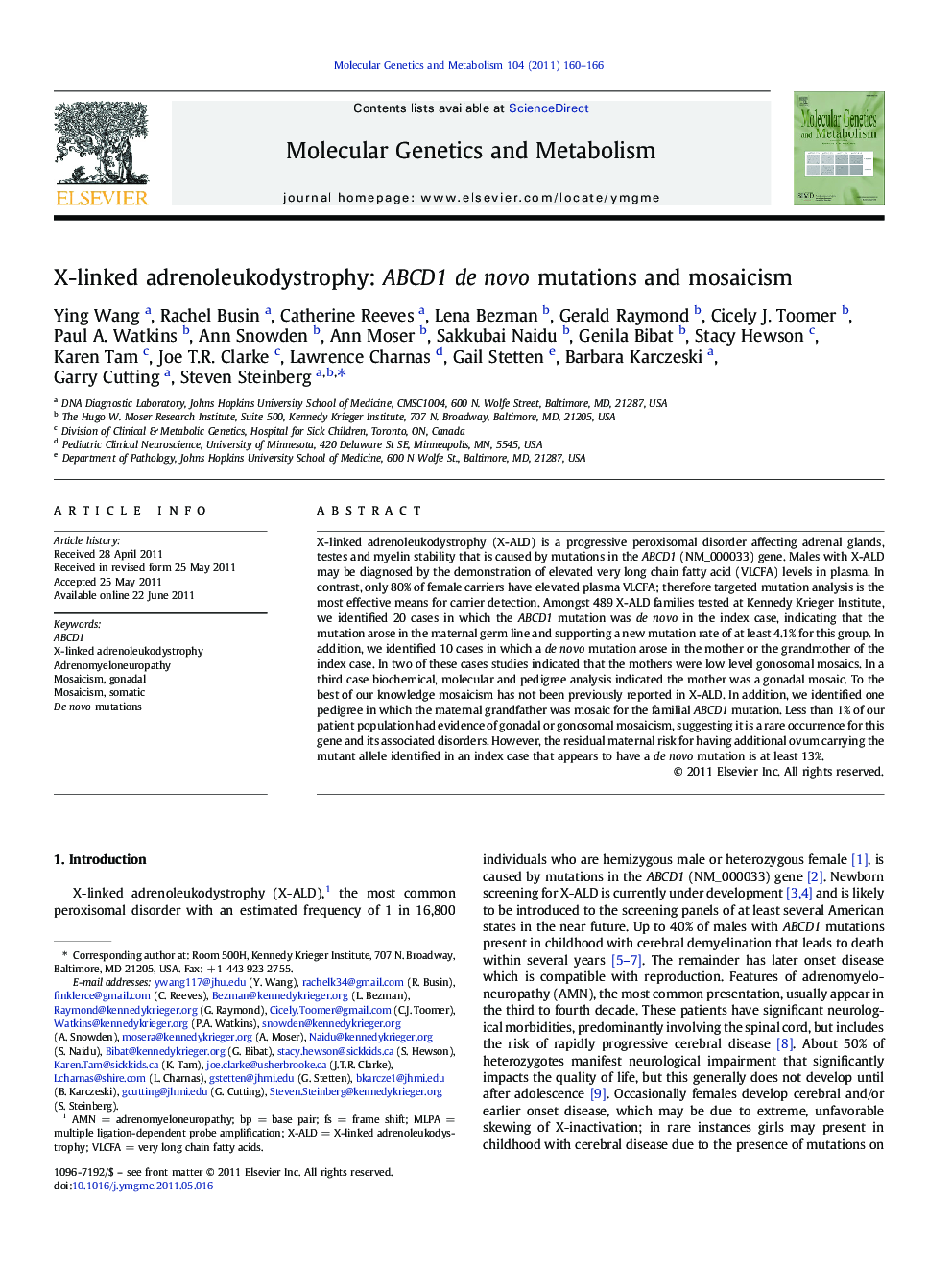| Article ID | Journal | Published Year | Pages | File Type |
|---|---|---|---|---|
| 8344237 | Molecular Genetics and Metabolism | 2011 | 7 Pages |
Abstract
X-linked adrenoleukodystrophy (X-ALD) is a progressive peroxisomal disorder affecting adrenal glands, testes and myelin stability that is caused by mutations in the ABCD1 (NM_000033) gene. Males with X-ALD may be diagnosed by the demonstration of elevated very long chain fatty acid (VLCFA) levels in plasma. In contrast, only 80% of female carriers have elevated plasma VLCFA; therefore targeted mutation analysis is the most effective means for carrier detection. Amongst 489 X-ALD families tested at Kennedy Krieger Institute, we identified 20 cases in which the ABCD1 mutation was de novo in the index case, indicating that the mutation arose in the maternal germ line and supporting a new mutation rate of at least 4.1% for this group. In addition, we identified 10 cases in which a de novo mutation arose in the mother or the grandmother of the index case. In two of these cases studies indicated that the mothers were low level gonosomal mosaics. In a third case biochemical, molecular and pedigree analysis indicated the mother was a gonadal mosaic. To the best of our knowledge mosaicism has not been previously reported in X-ALD. In addition, we identified one pedigree in which the maternal grandfather was mosaic for the familial ABCD1 mutation. Less than 1% of our patient population had evidence of gonadal or gonosomal mosaicism, suggesting it is a rare occurrence for this gene and its associated disorders. However, the residual maternal risk for having additional ovum carrying the mutant allele identified in an index case that appears to have a de novo mutation is at least 13%.
Related Topics
Life Sciences
Biochemistry, Genetics and Molecular Biology
Biochemistry
Authors
Ying Wang, Rachel Busin, Catherine Reeves, Lena Bezman, Gerald Raymond, Cicely J. Toomer, Paul A. Watkins, Ann Snowden, Ann Moser, Sakkubai Naidu, Genila Bibat, Stacy Hewson, Karen Tam, Joe T.R. Clarke, Lawrence Charnas, Gail Stetten, Barbara Karczeski,
